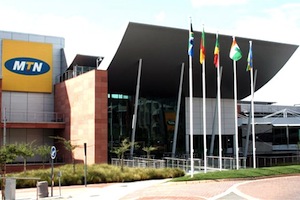Telecommunications equipment manufacturer Ericsson claims it will be the first in Africa to deploy a third-generation (3G) cellphone network in the 900MHz band. It will build the network for MTN’s subsidiary in Ghana.
The move is significant, as the 900MHz band is better suited to providing 3G broadband than the higher frequencies used by most 3G operators around the world.
Faster 3G cellular networks typically operate at 2,1GHz, whereas second-generation (2G) GSM networks operate at 900MHz and 1,8GHz. Now regulators around the world are starting to encourage operators to free up spectrum in the 900MHz band to provide 3G and GSM services in a process known as “refarming”.
Unlike GSM networks, which were designed mainly to carry voice calls, 3G networks are better suited to providing wireless broadband. The GSM Association says freeing up spectrum in the 900MHz band to provide 3G could give hundreds of millions of people around the world access to broadband for the first time.
The challenge for 3G operators has been that the higher frequencies traditionally used by the technology do not penetrate buildings as easily as lower-frequency GSM signals.
Lower frequencies also deliver larger coverage areas around base stations, making it more affordable to roll out broadband wireless services in outlying areas — an important consideration in Africa where fixed-line networks are poorly developed.
According to a GSM Association report, 3G at 900MHz provides a 44% to 119% improvement in coverage in urban and rural areas respectively when compared to the same technology operating at 2,1GHz.
Ericsson says the MTN Ghana 3G network, which it will begin constructing in the second quarter of 2010, will co-exist in the 900MHz band, alongside GSM services. The company says it assisted MTN with “spectrum optimisation” to free up the 3,8MHz required for 3G at 900MHz.
It says the project will “further extend mobile broadband coverage in Ghana, especially into suburban, rural and offshore areas. In urban areas, it complements 3G at 2,1GHz in offering more network capacity and better in-building coverage.”
The Ghanaian project is likely to be the first of many such projects across the continent.
In SA, for example, Cell C hinted late last year that it would refarm some of its 900MHz spectrum so it, too, could begin rolling out 3G services in that band, particularly in more outlying areas. Cell C is understood to be keen to move some of its voice traffic onto its GSM service in the 1,8GHz band so it can begin deploying 3G at 900MHz.
The operator announced late last year that it would build a high-speed 3G network using a technology known enhanced high-speed packet access, or HSPA+. This technology is currently capable of delivering theoretical download speeds of up to 21Mbit/s. — Duncan McLeod, TechCentral
- Subscribe to our free daily newsletter
- Follow us on Twitter or on Facebook





